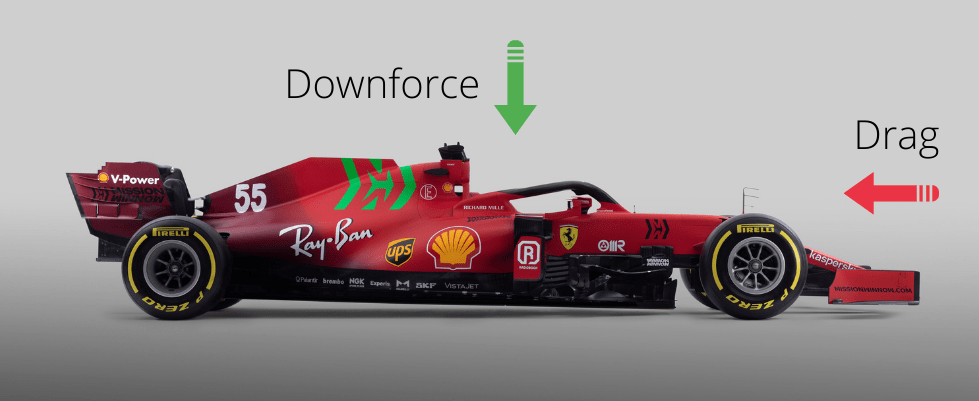Formula 1, the pinnacle of motorsport, showcases cutting-edge technology and engineering brilliance in every race. Have you ever wondered how those sleek machines, the F1 cars, work their magic on the track? Let’s dive into the intricacies of these speed demons.
YouTube CC: @animagraffs
The Heart of the Beast: The Power Unit of an F1 Car
The core of an F1 car lies the power unit, a marvel of engineering. Comprising the hybrid combination of a V6 turbocharged engine and Energy Recovery Systems (ERS), it produces the mind-boggling power that propels the car forward. The engine’s thermal efficiency and power-to-weight ratio are unmatched, extracting every ounce of performance from the limited fuel allowed.
Downforce and Aerodynamics
Aerodynamics plays a pivotal role in F1, influencing both speed and stability. The cars are meticulously designed to carve through the air with minimal resistance.
The front and rear wings and various aerodynamic elements generate crucial downforce, ensuring the tires grip the track firmly. This downforce not only aids cornering at high speeds but also prevents the car from taking flight.
Transmission: Seamless Gear Changes
F1 cars boast lightning-fast gear changes thanks to their semi-automatic sequential gearboxes. The transmission is a seamless blend of human reflexes and precision engineering. Each gear change is executed with split-second accuracy, ensuring the engine operates within its optimal performance range, a critical factor in the pursuit of victory.
Suspension System: Mastering the Terrain
The suspension system is critical to an F1 car’s ability to handle various track conditions. Carbon-fiber wishbones and pushrod-activated springs provide the necessary flexibility and responsiveness. Moreover, this allows the car to navigate undulating surfaces and take tight corners with minimal loss of traction, enhancing overall performance.
Braking System: Deceleration with Precision
Braking in an F1 car is an art form. The carbon-fibre disc brakes, subjected to intense heat during braking, provide exceptional stopping power. The brake-by-wire system allows for precise control over deceleration. Drivers must delicately balance the need for aggressive braking and preserve the life of the braking components throughout the race.
Tyres: The Interface with the Track
The tires are the sole contact between the F1 car and the track, making them a crucial performance aspect. The specially designed, high-performance tires provide optimal grip, traction, and durability. Tire management is a strategic game, with teams and drivers constantly evaluating the trade-off between speed and preserving tire life.
In the world of Formula 1, where every millisecond counts, the intricate interplay of power, aerodynamics, transmission, suspension, braking, and tires defines a team’s success. The relentless pursuit of perfection in each component culminates creating a machine that races and dances on the edge of technological prowess.
READ MORE: What is Downforce in Formula One?
Understanding how an F1 car works unveils the poetry of engineering and the relentless pursuit of speed in the quest for victory.




